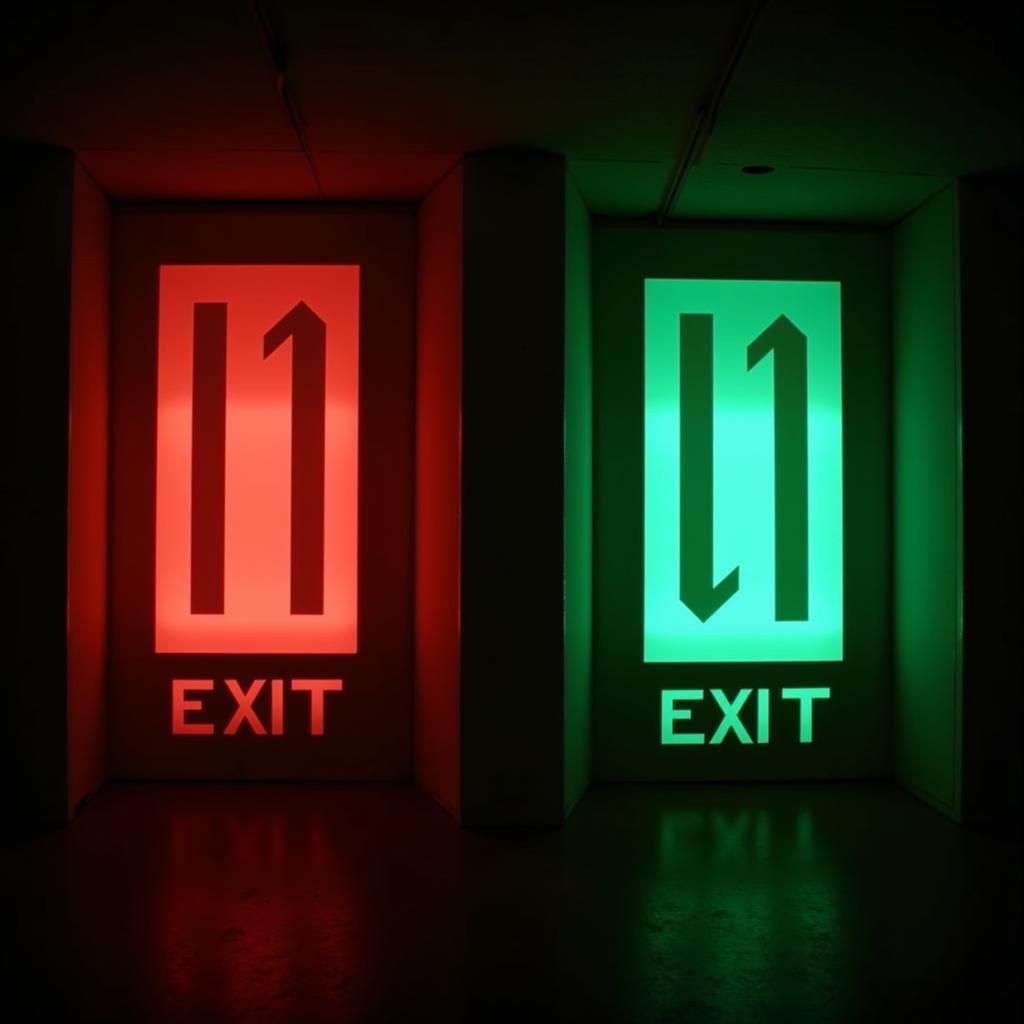Exit signs are a crucial part of safety regulations, guiding people towards escape routes during emergencies. But what color are they, and why? Knowing this isn’t just trivial information; it’s about understanding how design influences our responses in critical situations. Let’s delve into the fascinating world of exit sign colors and their significance.
Red exit signs are the most common, ingrained in our collective consciousness as a symbol of emergency egress. But green is rapidly gaining traction, especially internationally. The reason for this shift lies in a blend of scientific research, cultural nuances, and evolving safety standards. This raises a question: is one color inherently superior, or does their effectiveness depend on the context? After all, colors play a powerful role in our perception, often triggering instinctive reactions. Like how certain shades evoke calmness while others spark excitement – the psychology of color is a complex yet fascinating field. Similarly to how we understand what color is rose red, there’s a depth to the meaning behind exit sign colors. Want to learn more about different shades? Check out what is anthracite color.
Red Exit Signs: A Longstanding Tradition
Red has long been associated with danger, warnings, and stop signs. This association is deeply rooted in our cultural understanding. Its high visibility makes it easy to spot in a variety of lighting conditions, a crucial factor during emergencies when visibility might be compromised by smoke or darkness. Red also creates a sense of urgency, prompting quick action. This immediate recognition is invaluable in life-threatening situations.
Why Red Remains Prevalent
The continued use of red exit signs is often attributed to tradition and familiarity. Many building codes and fire safety regulations still specify red as the required color. This consistency ensures a universal understanding of the sign’s meaning, regardless of location.
Green Exit Signs: The Rising Star
Green exit signs, while newer on the scene, are becoming increasingly popular, particularly in Europe and other parts of the world. The shift towards green stems partly from research suggesting its enhanced visibility in certain conditions and its association with safety and escape routes. Knowing what are tertiary colors might also help understand how green interacts with its surrounding environment. Interestingly, the rise of green exit signs is similar to how we’ve come to associate certain colors with animals, like when we ask what color are bunnies.
The Science Behind Green
Some studies suggest that green may be more readily perceived by the human eye, especially in low-light conditions or when viewed peripherally. Additionally, green is less likely to be confused with other red lights or signals that might be present during a fire or other emergency.
Cultural Acceptance of Green
In many cultures, green symbolizes safety, go, and direction, reinforcing its suitability for exit signs. This positive connotation can contribute to a calmer, more directed evacuation process, reducing panic.
Red vs. Green: Which is Better?
The debate over red versus green exit signs continues. While red has the advantage of tradition and established recognition, green offers potential benefits in terms of visibility and psychological impact. Ultimately, the choice depends on local regulations, specific building requirements, and ongoing research. You can also learn more about understanding colors and their meaning when someone shows you their true colors.
 Red and Green Exit Signs Comparison
Red and Green Exit Signs Comparison
What About Other Colors?
While red and green are the dominant colors for exit signs, some variations exist. Blue exit signs, for instance, are sometimes used to indicate emergency exits specifically for staff or personnel. However, these variations are less common and not universally recognized.
Conclusion
The color of exit signs is a critical element of safety planning. While red remains the most common choice, green is rapidly gaining popularity due to its potential advantages in visibility and psychological impact. Understanding the reasons behind these color choices is essential for building owners, safety officers, and anyone concerned with ensuring effective emergency evacuation procedures. Remember, choosing the right exit sign color can be a life-saving decision.
FAQs
- Are green exit signs allowed in all countries?
- Why are exit signs illuminated?
- What is the standard size for an exit sign?
- Do exit signs need to be tested regularly?
- What other safety measures are commonly used in conjunction with exit signs?
- Where can I find more information about exit sign regulations in my area?
- What are the penalties for not having properly installed exit signs?
Common Exit Sign Questions:
- Are LED exit signs better than incandescent ones? Yes, LEDs are more energy-efficient and longer-lasting.
- Can I use a temporary exit sign during construction? Yes, specific guidelines regulate temporary exit signs.
- What is the viewing distance requirement for exit signs? Regulations specify minimum viewing distances based on the size and type of building.
Further Reading
For more insights into color and its impact, explore resources on our website about topics like “what is anthracite color.”
Contact Us
Need help with your color choices or painting projects? Contact us at 0373298888, email us at [email protected], or visit us at 86 Cầu Giấy, Hanoi. Our 24/7 customer service team is always ready to assist.
